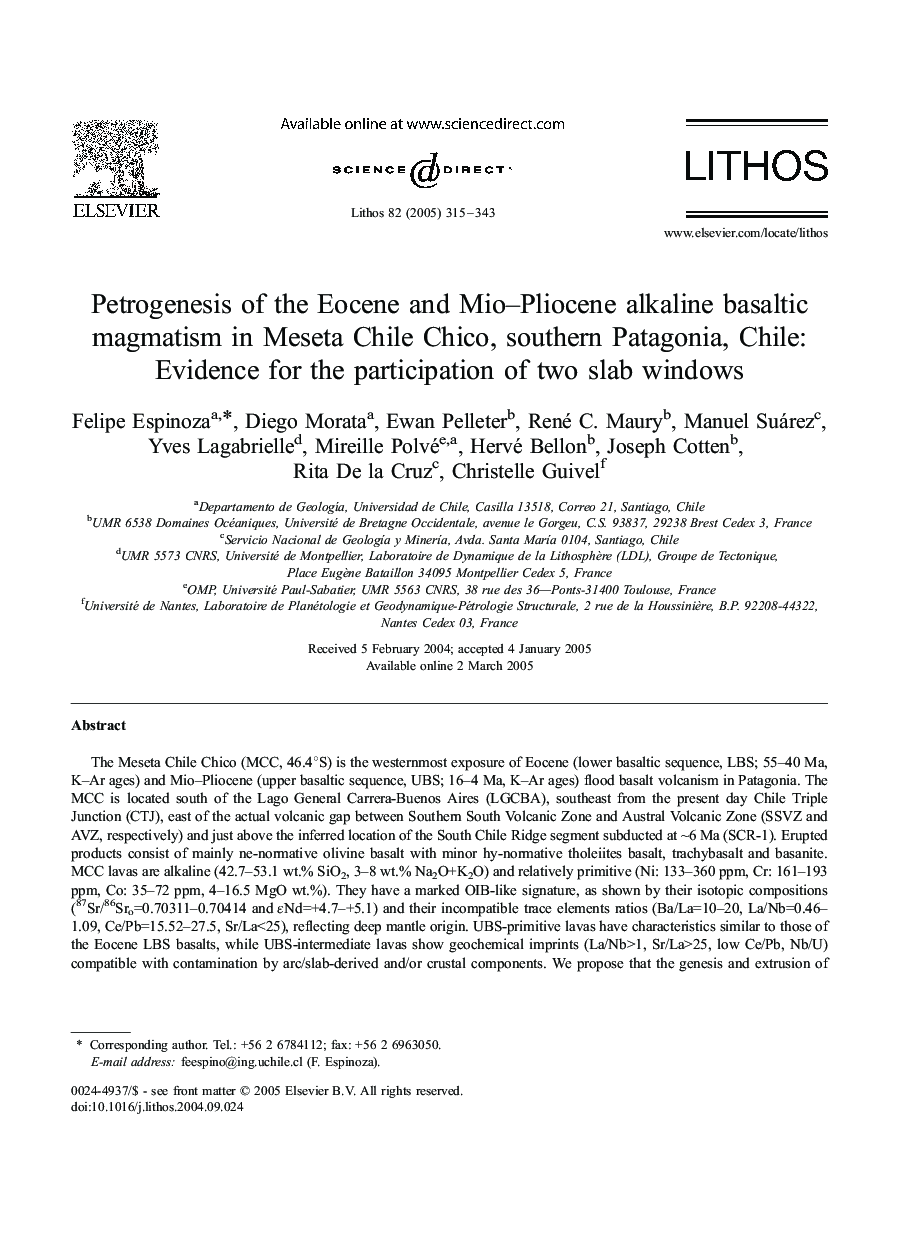| Article ID | Journal | Published Year | Pages | File Type |
|---|---|---|---|---|
| 9531856 | Lithos | 2005 | 29 Pages |
Abstract
The Meseta Chile Chico (MCC, 46.4°S) is the westernmost exposure of Eocene (lower basaltic sequence, LBS; 55-40 Ma, K-Ar ages) and Mio-Pliocene (upper basaltic sequence, UBS; 16-4 Ma, K-Ar ages) flood basalt volcanism in Patagonia. The MCC is located south of the Lago General Carrera-Buenos Aires (LGCBA), southeast from the present day Chile Triple Junction (CTJ), east of the actual volcanic gap between Southern South Volcanic Zone and Austral Volcanic Zone (SSVZ and AVZ, respectively) and just above the inferred location of the South Chile Ridge segment subducted at â¼6 Ma (SCR-1). Erupted products consist of mainly ne-normative olivine basalt with minor hy-normative tholeiites basalt, trachybasalt and basanite. MCC lavas are alkaline (42.7-53.1 wt.% SiO2, 3-8 wt.% Na2O+K2O) and relatively primitive (Ni: 133-360 ppm, Cr: 161-193 ppm, Co: 35-72 ppm, 4-16.5 MgO wt.%). They have a marked OIB-like signature, as shown by their isotopic compositions (87Sr/86Sro=0.70311-0.70414 and εNd=+4.7-+5.1) and their incompatible trace elements ratios (Ba/La=10-20, La/Nb=0.46-1.09, Ce/Pb=15.52-27.5, Sr/La<25), reflecting deep mantle origin. UBS-primitive lavas have characteristics similar to those of the Eocene LBS basalts, while UBS-intermediate lavas show geochemical imprints (La/Nb>1, Sr/La>25, low Ce/Pb, Nb/U) compatible with contamination by arc/slab-derived and/or crustal components. We propose that the genesis and extrusion of magmas is related to the opening of two slab windows due to the subduction of two active ridge segments beneath Patagonia during Eocene and Mio-Pliocene.
Related Topics
Physical Sciences and Engineering
Earth and Planetary Sciences
Geochemistry and Petrology
Authors
Felipe Espinoza, Diego Morata, Ewan Pelleter, René C. Maury, Manuel Suárez, Yves Lagabrielle, Mireille Polvé, Hervé Bellon, Joseph Cotten, Rita De la Cruz, Christelle Guivel,
